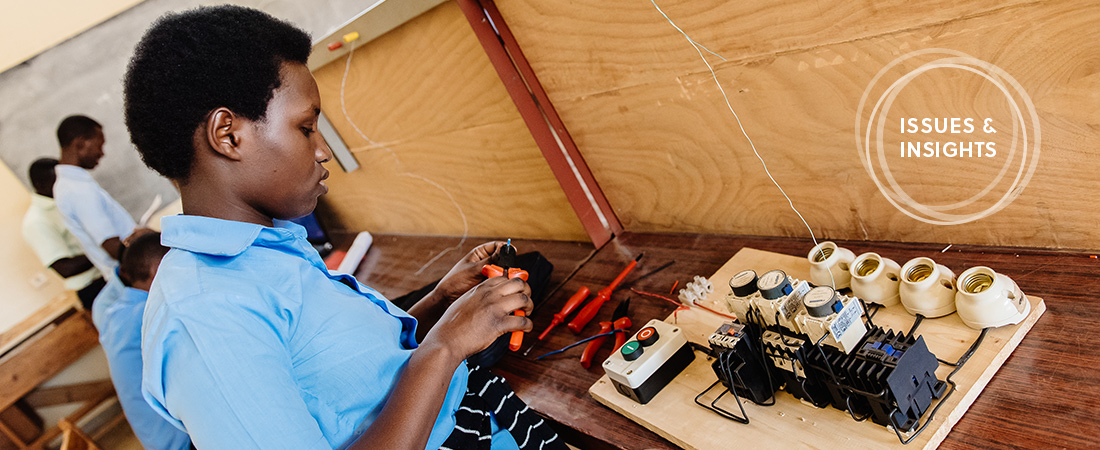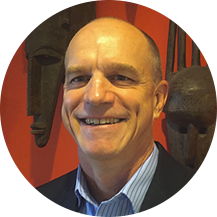Building Partnerships to Go to Scale

The USAID Huguka Dukore Akazi Kanoze project in Rwanda has relied on strong partnerships to grow.
What lies at the heart of successful international development projects that strive to go to scale? EDC’s Bill Potter believes it’s the partnerships and systems building approaches—with local nongovernmental organizations, government officials, and other implementing partners—that make all the difference.
But creating and fostering those partnerships can be a challenge. Here, Potter draws upon his experiences in Southeast Asia and Africa to discuss what works.
Q: In a large-scale international development program, what makes for a good partnership?
Potter: A key element is solid buy-in from the very beginning of the partnership. And that goes for whether we are talking about working with a local NGO partner, an international consortium partner, or a government partner. And what builds that buy-in is a shared vision for what we, as a group of partners, are setting out to do. There has to be some sort of level playing field to shape the partnership around a common vision.
Q: How do you build that sense of shared buy-in when you have multiple partners working on a project?
Potter: A unified team approach is one of the underpinnings for an effective partnership. So for example, in Rwanda, we held an opening set of meetings with all of the international partners who would be working on the USAID Huguka Dukore Akazi Kanoze (HDAK) project. I asked everyone to join the project team and work together within the same project office. And as soon as we selected the local Rwandan partners, we worked to develop a shared vision with them. For example, we have 22 local partners who are helping us implement USAID HDAK, and we spend a lot of time in group settings, sharing challenges, successes, troubleshooting, and just trying to get them as involved as possible with ownership of the day-to-day workings of the project.
Q: In the Philippines, the Basa Pilipinas project to improve early grade literacy is now being expanded throughout the entire country. What role did partnerships play in this success?
Potter: In the Philippines, we were extremely fortunate to have full buy-in from government partners. This was a driving success factor for Basa Pilipinas. We had government ownership and support from the very top, which is the number one determinant of whether you are going to achieve scale and sustainability on these international development projects. The undersecretary of education in the Philippines is a reading expert who has a clear vision for what needs to be done to improve literacy. She has been a committed partner from day one, and as a result, we have been able to count on our government partners to own and drive project efforts every step of the way. This matters when you are trying to reach thousands of teachers systemwide and over 1 million students—and Basa Pilipinas did just that.
Q: What advice do you have for organizations that want to use partnerships to build their programs?
Potter: Partner with government officials at all levels to strengthen existing government systems and create ownership—you simply can’t reach scale and sustainability without government ownership and systems building. You also have to partner with local NGOs to help them build their capacity, too, because it is these civil society organizations that will continue to carry out the work after the development grant has ended. And finally, you have to link these two groups.
Over the past decade, we have used this approach to support the Rwandan government’s workforce development efforts, and it has really paid off. EDC’s Work Ready Now! curriculum has been fully adopted by the government—every upper level high school and TVET student in the country now receives the WRN! curriculum. And then, when they graduate, a network of NGOs is ready to help them find work. That’s systems building leading to scale right there!
